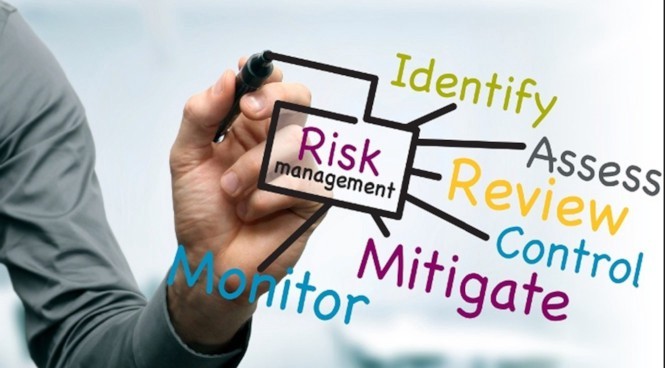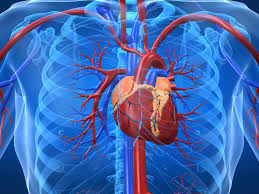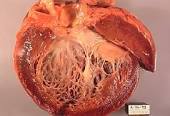
Diagnosed with Cancer? Your two greatest challenges are understanding cancer and understanding possible side effects from chemo and radiation. Knowledge is Power!
Learn about conventional, complementary, and integrative therapies.
Dealing with treatment side effects? Learn about evidence-based therapies to alleviate your symptoms.
Click the orange button to the right to learn more.
- You are here:
- Home »
- Blog »
- side effects ID and prevention »
- Chemotherapy-induced CVD
Chemotherapy-induced CVD

Chemotherapy-induced CVD in AYA cancer survivors is a short, long-term and sometimes a late stage side effect of both chemotherapy and radiation.
In 2016, Kaiser Permanente published a peer-reviewed study on Cardiovascular disease risk profiles in survivors of adolescents and young adults. The purpose of the study was to identify the “risk factors of cardiovascular disease” or cardiovascular risk factors (CVRFs), and if cancer increased the likelihood.
“The distribution of demographic characteristics, cancer characteristics, and CVRFs was calculated among cancer survivors and the comparison patients. For all the analyses described in this section, we performed an overall analysis for all cancer types combined and a stratified analysis for selected cancer types: breast, lymphoma, leukemia, melanoma, and thyroid cancer…
Note that for the procedure Kaiser Permanente used multiple types of cancer as well as multiple health problems. The results showed that there was indeed a greater risk of cardiovascular disease and other health problems after cancer. As stated:
“The incidence rate for developing diabetes, hypertension, and dyslipidemia was 60.4, 145.8, and 138.3 per 1,000 person-years among cancer survivors and 42.7, 110.0, and 117.1 per 1,000 person-years among the comparison group without cancer, respectively.
On average, survivors of AYA cancer were at increased risk for developing diabetes and dyslipidemia when compared with patients without cancer. These associations also seemed to vary by cancer type. In this study, we observed an overall two-fold CVD risk increase for survivors of AYA cancer when compared with demographically matched patients without cancer. Furthermore, survivors of AYA cancer who developed CVD had a 10-fold increased risk of dying compared with survivors without CVD.”
“Among survivors of AYA cancer, the presence of one or more of the CVRFs increased the risk of developing CVD compared with survivors without any CVRFs. Cancer survivors also had an increased risk of developing one or more CVRFs. However, despite this, accounting for the differences of CVRFs did not fully explain the increased CVD risk seen in these survivors.
The remaining risk increase may be attributable to cardiotoxic cancer treatments or a shared pathogenic mechanism between cancer and CVD (ie, oxidative stress, genetic traits). These data suggest the need for strategies other than CVRF prevention for CVD risk reduction in these cancer survivors, including the evaluation of novel cancer treatment regimens that minimize cardiovascular toxicity.”
In summation, the study presented shows a clear indication of increased risk of cardiovascular disease in cancer survivors, more than twice that of the control group. What’s more, is that death by CVD is over ten times more likely in someone whos previously been diagnosed with cancer.
The evidence shown in this study becomes more relevant or poignant when considering that cardiovascular disease is the leading cause of death in the United States. One in every five people will die of CVD. But what is the link between cancer and CVD, and why does cancer so greatly increase its risk?
The purpose of this study is to answer the how not the why, but it does suggest that the increase in risk could be the result of conventional oncology. As was quoted from the study, the increase in risk may be attributable to “cardiotoxic cancer treatments,” and the data suggests the need for “evaluation of novel cancer treatment regimens that minimize cardiovascular toxicity.”
These suggestions made in the study imply that there are conventional cancer treatments that are cardiotoxic; they can damage the heart and blood vessels. This is verifiably true about two of the most common cancer treatments: radiation therapy, and chemotherapy.
According to Dr. Eugene Storozynsky, a Specialist in Cardio-Oncology, heart damage from both radiation and chemo is common.
“Between 5 percent and 15 percent of cancer patients will develop full-blown heart failure after surviving cancer. This number doesn’t account for many others who develop high blood pressure or atrial fibrillation — which increases the risk of stroke — as a result of cancer treatment,” Storozynsky states.
During chemo, the heart is weakened as a side effect of the drugs used in treatment. “Some types of chemotherapy (primarily in a class of drugs called anthracyclines) weaken the heart muscle from a buildup of calcium and other chemical reactions in the body that release harmful free radicals. Thus, chemotherapy side effects include cardiomyopathy (an enlargement) or congestive heart failure,” Storozynsky says.
In the case of radiation therapy, it can be harmful when aimed at the chest region for breast cancer or lung cancer. “[It] can prompt a thickening of the blood vessels and heart valves, inflammation, and artery blockages.
Heart problems due to radiation often impact younger people, too. Heart disease can appear during cancer treatment — or emerge as long as 15 to 20 years later,” Storozynsky continues, “I always emphasize prevention to my patients who are cancer survivors,” he said. “You do not want to be told you’re cancer-free, only to develop congestive heart failure or die of another type of preventable heart problem. The best thing a person can do is maintain a healthy lifestyle and get the proper follow-up with a cardiologist.”
In the case of both chemo and radiation therapy, the patient will suffer a decline in cardiovascular health. It’s a risk that, unfortunately, comes with the therapy. The side effects that come with conventional cancer treatments are better than no treatment. Perhaps cancer patients view that as a necessary compromise, their pound of flesh.
Dr. Storozynsky mentions the best course of action is to be proactive about cardiovascular health and maintain a healthy lifestyle. What may be telling, that is, implicative of what kind of research really needs to be conducted in the world of oncology is the preventative suggestion given in the study done by Kaiser Permanente: the evaluation of novel cancer treatment regimens that minimize cardiovascular toxicity. These “novel cancer treatments” do exist, but aren’t practiced on a wider scale because they aren’t approved by the CDC.
Perhaps, if they were allowed more funding and attention, they could be studied. The world could know for certain if there’s a more heart-healthy cancer treatment out there, and why those oncologists who conducted this study gestured at the idea that there’s a better way.
To Learn More about Non-conventional Heart Therapies- click now
Alexander Emerson
- Cancer Caregiver
- Writer
The above study clearly illustrates the problem- the damage to the cancer patient’s heart caused by a growing list of conventional cancer treatments. What the study doesn’t mention are those evidence-based but non-conventional therapies shown to promote heart health such as:
- CoQ10,
- Omega-3 fatty acids,
- Frequent, moderate exercise, etc.
I am an AYA cancer survivor who developed chemotherapy-induced cardiomyopathy and atrial fibrillation fully 15 years after my stem cell transplant. I don’t take any conventional heart medications. I follow an evidence-based but non-conventional heart therapy program illustrated in the blog posts linked below.
Consider evidence-based but non-toxic heart healthy therapies before, during or after cardio-toxic cancer care.
- Coenzyme Q10 Is Safe and Effective Cardiomyopathy Therapy
- Coronary Artery Disease- Non-toxic, Non-conventional Therapies
- Chemo-Induced Afib, Hi BP, DVT
- Collagen-Skin, Muscle, Joint, Brain and Heart Health
- CoQ10 to Improve Ejection Fraction in Congestive Heart Failure
- Exercise-Based Cardiac Rehabilitation
David Emerson
- Cancer Survivor
- Cancer Coach
- Director PeopleBeatingCancer



